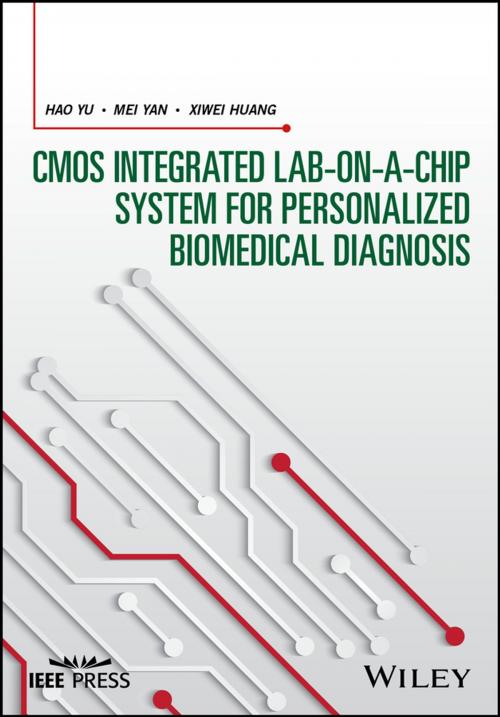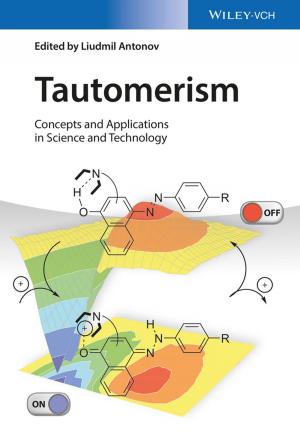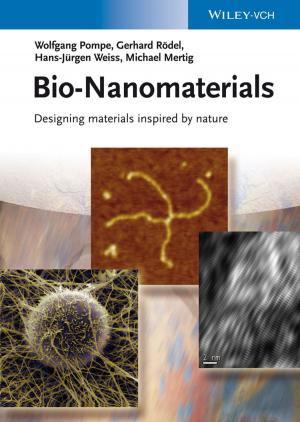CMOS Integrated Lab-on-a-chip System for Personalized Biomedical Diagnosis
Nonfiction, Science & Nature, Technology, Electronics, Circuits| Author: | Hao Yu, Mei Yan, Xiwei Huang | ISBN: | 9781119218340 |
| Publisher: | Wiley | Publication: | April 4, 2018 |
| Imprint: | Wiley-IEEE Press | Language: | English |
| Author: | Hao Yu, Mei Yan, Xiwei Huang |
| ISBN: | 9781119218340 |
| Publisher: | Wiley |
| Publication: | April 4, 2018 |
| Imprint: | Wiley-IEEE Press |
| Language: | English |
A thorough examination of lab-on-a-chip circuit-level operations to improve system performance
A rapidly aging population demands rapid, cost-effective, flexible, personalized diagnostics. Existing systems tend to fall short in one or more capacities, making the development of alternatives a priority. CMOS Integrated Lab-on-a-Chip System for Personalized Biomedical Diagnosis provides insight toward the solution, with a comprehensive, multidisciplinary reference to the next wave of personalized medicine technology.
A standard complementary metal oxide semiconductor (CMOS) fabrication technology allows mass-production of large-array, miniaturized CMOS-integrated sensors from multi-modal domains with smart on-chip processing capability. This book provides an in-depth examination of the design and mechanics considerations that make this technology a promising platform for microfluidics, micro-electro-mechanical systems, electronics, and electromagnetics.
From CMOS fundamentals to end-user applications, all aspects of CMOS sensors are covered, with frequent diagrams and illustrations that clarify complex structures and processes. Detailed yet concise, and designed to help students and engineers develop smaller, cheaper, smarter lab-on-a-chip systems, this invaluable reference:
- Provides clarity and insight on the design of lab-on-a-chip personalized biomedical sensors and systems
- Features concise analyses of the integration of microfluidics and micro-electro-mechanical systems
- Highlights the use of compressive sensing, super-resolution, and machine learning through the use of smart SoC processing
- Discusses recent advances in complementary metal oxide semiconductor-integrated lab-on-a-chip systems
- Includes guidance on DNA sequencing and cell counting applications using dual-mode chemical/optical and energy harvesting sensors
The conventional reliance on the microscope, flow cytometry, and DNA sequencing leaves diagnosticians tied to bulky, expensive equipment with a central problem of scale. Lab-on-a-chip technology eliminates these constraints while improving accuracy and flexibility, ushering in a new era of medicine. This book is an essential reference for students, researchers, and engineers working in diagnostic circuitry and microsystems.
A thorough examination of lab-on-a-chip circuit-level operations to improve system performance
A rapidly aging population demands rapid, cost-effective, flexible, personalized diagnostics. Existing systems tend to fall short in one or more capacities, making the development of alternatives a priority. CMOS Integrated Lab-on-a-Chip System for Personalized Biomedical Diagnosis provides insight toward the solution, with a comprehensive, multidisciplinary reference to the next wave of personalized medicine technology.
A standard complementary metal oxide semiconductor (CMOS) fabrication technology allows mass-production of large-array, miniaturized CMOS-integrated sensors from multi-modal domains with smart on-chip processing capability. This book provides an in-depth examination of the design and mechanics considerations that make this technology a promising platform for microfluidics, micro-electro-mechanical systems, electronics, and electromagnetics.
From CMOS fundamentals to end-user applications, all aspects of CMOS sensors are covered, with frequent diagrams and illustrations that clarify complex structures and processes. Detailed yet concise, and designed to help students and engineers develop smaller, cheaper, smarter lab-on-a-chip systems, this invaluable reference:
- Provides clarity and insight on the design of lab-on-a-chip personalized biomedical sensors and systems
- Features concise analyses of the integration of microfluidics and micro-electro-mechanical systems
- Highlights the use of compressive sensing, super-resolution, and machine learning through the use of smart SoC processing
- Discusses recent advances in complementary metal oxide semiconductor-integrated lab-on-a-chip systems
- Includes guidance on DNA sequencing and cell counting applications using dual-mode chemical/optical and energy harvesting sensors
The conventional reliance on the microscope, flow cytometry, and DNA sequencing leaves diagnosticians tied to bulky, expensive equipment with a central problem of scale. Lab-on-a-chip technology eliminates these constraints while improving accuracy and flexibility, ushering in a new era of medicine. This book is an essential reference for students, researchers, and engineers working in diagnostic circuitry and microsystems.















